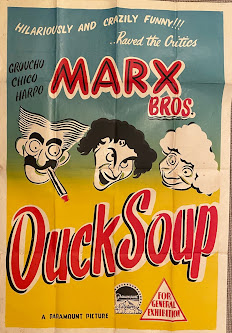Natasha Minsker, Death Penalty Policy Director at the ACLU of Northern California, has written a piece, originally published at DavisVanguard.org, on the unfairness of excluding from capital trials jurors with qualms about imposing the death penalty. She has kindly allowed me to cross-post here.
Death Qualification Process Leads To More Jurors Likely To Convict
by Natasha Minsker. March 1, 2011.
The right to be tried by a jury of your peers is a basic right in America. It is one of the innovations enshrined in our Constitution that sets our nation apart from most of the rest of the world. While most of us dread being called for jury service, we know that if it was us who stood accused of a crime, we would want to be judged by a cross-section of our community, not a government official in a black robe.
Yet when it comes to death penalty cases, the most gravely important in our justice system, we don’t use juries that actually represent a cross-section of the community. Instead, the law explicitly forbids a large group of community members from serving on the jury: anyone who does not support the death penalty. Today, in some California trials, that means nearly 40% of prospective jurors are excluded simply because of their qualms about the death penalty. The process offends many community members and the result of the process is a jury less inclined towards justice and more inclined towards conviction, no matter what the evidence shows.
Anyone who has been called for jury service in a death penalty case has experienced firsthand the process judges and lawyers call “death qualification,” the process of interviewing prospective jurors on their views about the death penalty to determine if they are “qualified” to serve. Many people have shared with me their own stories, particularly how humiliated they felt when the judge told them their opinions made them “unfit” to serve.
Because many people who oppose the death penalty do so because of deeply held religious beliefs, the result of the death qualification process is that many people of faith are prohibited from serving in death penalty cases. The Catholic Church’s position that the death penalty is inconsistent with the Church’s culture of life means that many Catholics are viewed with suspicion by prosecutors and judges in death penalty cases and are more likely to be excluded. In one California death penalty case, the prosecutor later testified that it was routine practice in his office to remove Jews from death penalty juries and a judge had even advised him to do so, because so many Jewish people are reluctant to impose the death penalty.
This flagrant bias in the selection of jurors pales in comparison to its impact on justice. Research shows that our prejudiced “qualification” process produces juries that are more likely to convict. Prospective jurors who make the cut to serve are more likely to believe prosecution witnesses and less likely to ask probing questions. As a result, many researchers believe innocent people are actually more likely to be wrongfully convicted in a death penalty case. Indeed, 138 innocent people have been freed from death rows in the US. Others are not so lucky. Cameron Todd Willingham was wrongfully convicted and executed in Texas for a fire, incorrectly labeled “arson,” that killed his children. Now experts agree the fire was in fact an accident.
Jurors who are pre-selected in this way are also more likely to sentence someone to death. That is after all the point of the current qualification system. But it’s not just that all the people with moral qualms about the death penalty have been removed from the jury. The prospective jurors left after death qualification are more likely to view evidence as “aggravating,” meaning it supports sentencing the person to death, and less likely to view the same evidence as “mitigating,” meaning it supports imposing a sentence of life without possibility of parole instead. Death qualified jurors view the facts and the evidence differently than do the jurors excluded from serving, differently in a way that favors the prosecution across the board.
When retired Supreme Court Justice John Paul Stevens recently concluded that the death penalty in America is unjust and should be replaced, he pointed to the death qualification process as one of the main reasons. Justice Stevens said that if we are going to have the death penalty, then the jury which decides the defendant’s fate should be drawn from a true cross-section of the community, not one tilted towards conviction. Better yet, Justice Stevens concluded, we should simply replace the death penalty with life without possibility of parole and end death qualification altogether.
In California, if we replace the death penalty with life without possibility of parole, we will save $1 billion in five years. Every part of the death penalty process is more expensive, from the trials that cost the county millions, to death row housing which is costing the state hundreds of millions. Our distorted qualification process for prospective jurors is one reason death penalty trials are so much more expensive. Hundreds more jurors must be called in death penalty cases, because so many will be disqualified, and the process often takes months of court time.
If prosecutors instead seek life without possibility of parole, they can ensure the safety of the community while ensuring swift and certain justice to the families of murder victims. They can also put an end to the unfair and costly process of tilting juries toward the death penalty and away from justice.
Tuesday, March 1, 2011
Subscribe to:
Post Comments
(
Atom
)







0 comments :
Post a Comment